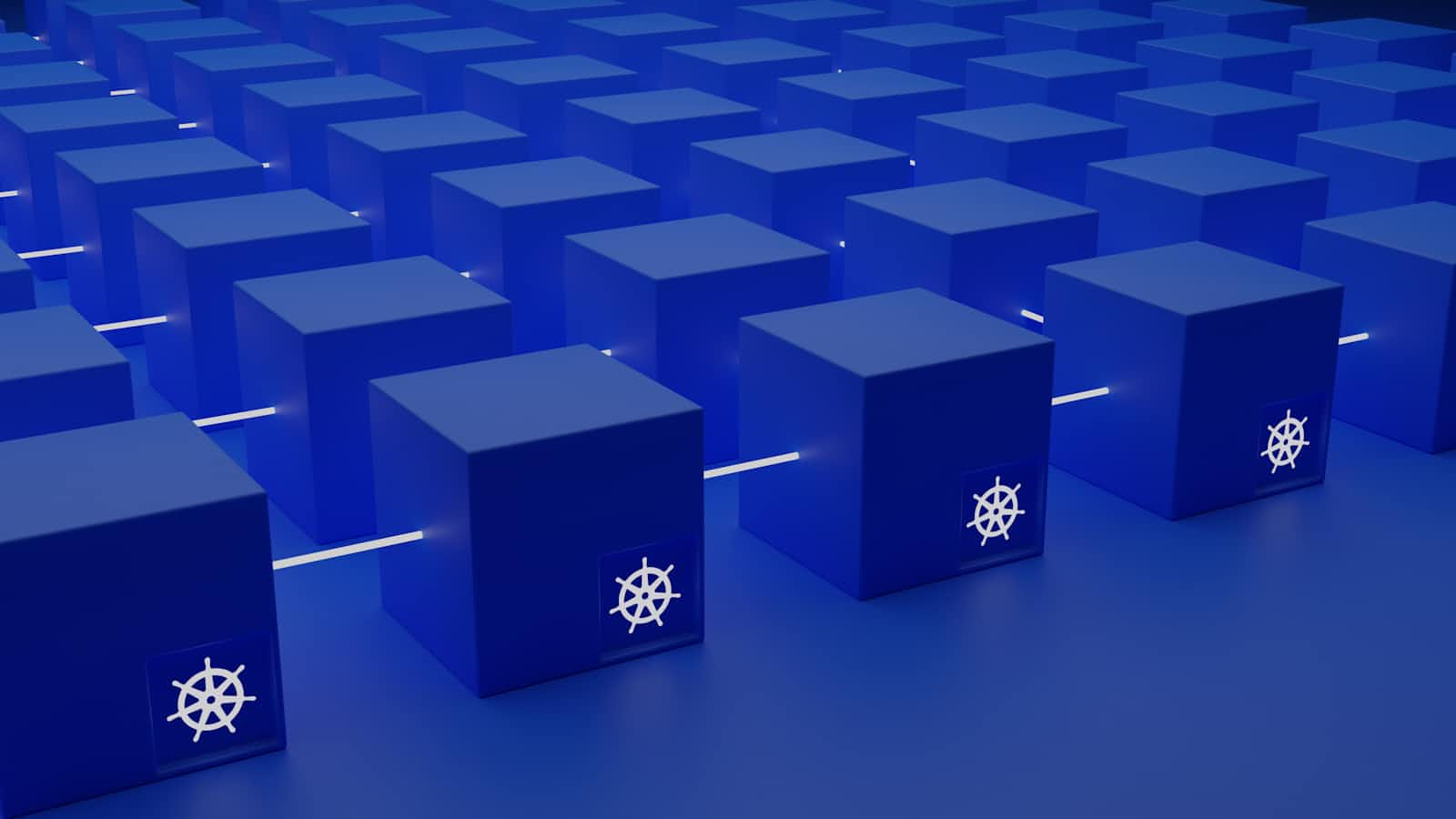K8s, Helm, and Container Orchestration
 James
James
Introduction
Over the past year, my role has increasingly involved containerization technology, particularly Kubernetes. Kubernetes is a fantastic tool for deploying applications and enabling them to scale according to demand. Once you're comfortable with these technologies, you can really start to leverage the power of elastic computing.
A supporting repo can be found here: https://github.com/JTSG1/helm-kubernetes-tutorial
Kubernetes
Kubernetes is a container orchestration platform. It allows you to take your Docker images and build production-ready workloads using YAML files. These files can be version-controlled and deployed through automated CI/CD pipelines. Sounds great, right?
Throughout this article, I'll provide some practical examples. Most of these will center around a service dashboard software called Homer. I've chosen Homer because it's relatively straightforward to get up and running, and I'm a big fan of the software for self-hosting.
Helm
Helm is essentially a templating system built on top of Kubernetes objects. It allows you to parameterize and manage releases centrally, offering greater control over your Kubernetes deployments. A great use case for Helm is the ability to tailor your application configuration to specific environments.
Imagine you've just developed the next big thing that's going to go viral and make you a fortune! If you're following good practices, you'll have several different environments set up to progress your deployment through various testing stages. Helm helps with this by allowing you to have a base configuration that you can then override for specific environments.
A Simple Kubernetes Deployment
We're going to look at a simplified set of Kubernetes manifests. Typically, in a production environment, you'd have more, but let's keep things simple for now. To deploy Homer, I want to define the following Kubernetes objects:
deployment: This contains the actual service.
namespace: This is used to segregate objects, as Kubernetes clusters rarely host just one workload.
service: This defines how we expose the application to the outside world.
service account: This specifies the 'user' the service will run under, which is especially useful when deploying to services like GCP that offer workload federation.
The file structure I'm aiming for will look like this:
./homer-sample-no-helm
- default-deployment.yaml
- default-namespace.yaml
- default-service.yaml
- default-serviceaccount.yaml
Here's the content of each of these files:
default-deployment.yaml
This object contains the actual container and its related settings.
YAML
apiVersion: apps/v1
kind: Deployment
metadata:
name: homer-deployment
namespace: ns-homer
labels:
app: homer-deployment
spec:
strategy:
type: Recreate
replicas: 1
selector:
matchLabels:
app: kafka-sample
template:
metadata:
annotations:
sampleAnnotation: "a-sample-annotation"
labels:
app: kafka-sample
spec:
serviceAccountName: homer-service-account
containers:
# hello world container
- name: hello-world
image: docker.io/b4bz/homer
imagePullPolicy: IfNotPresent
ports:
- name: http
containerPort: 8080
protocol: TCP
resources:
limits:
cpu: 100m
memory: 128Mi
requests:
cpu: 100m
memory: 128Mi
env:
- name: MY_ENV_VAR
value: "my-env-var-value"
- name: MY_ENV_VAR_2
value: "my-env-var-value-2"
restartPolicy: Always
default-namespace.yaml
This is the Kubernetes namespace definition for this deployment.
YAML
apiVersion: v1
kind: Namespace
metadata:
name: ns-homer
labels:
app: ns-homer
default-service.yaml
This service exposes the deployment externally using a LoadBalancer.
YAML
apiVersion: v1
kind: Service
metadata:
name: homer-deployment
namespace: ns-homer
labels:
app: homer-deployment
spec:
ports:
- name: http
port: 8080
targetPort: 8080
selector:
app: kafka-sample
type: LoadBalancer
default-serviceaccount.yaml
This is the Kubernetes service account that the deployments will run under.
YAML
apiVersion: v1
kind: ServiceAccount
metadata:
name: sa-homer-sample
namespace: ns-homer
labels:
app: home-sample
As you can already see, even for a relatively simple deployment, there are quite a few files. Maintaining these files separately for each of your RTL (Route to Live) environments would quickly become cumbersome. This is where Helm comes in handy.
Another thing you might notice is the amount of repetition across these files. A simple typo in one of these fields can lead to hours of debugging! Trust me, I've been there.
Helm to the Rescue
Now, let's look at the same set of files but within a Helm setup.
./homer-sample
- templates/
- default-deployment.yaml
- default-namespace.yaml
- default-service.yaml
- default-serviceaccount.yaml
- Chart.yaml
- values.yaml
Inside the templates folder, we have the same set of files, but their content is different. We'll review that in a moment. Additionally, we also have two new files: Chart.yaml and values.yaml.
Chart.yaml contains metadata about the Helm deployment.
values.yaml is a central store for variables that we can reference in our Helm-templated Kubernetes manifests.
Now, let's re-examine the four manifest templates:
default-deployment.yaml
This file now contains references to Values.* variables, which are defined in the values.yaml file. You can immediately see the benefits of this approach to structuring these files. We are essentially templating the Helm files and injecting values defined elsewhere into them.
Also of note are the conditional statements included here.
YAML
apiVersion: apps/v1
kind: Deployment
metadata:
name: {{ .Values.deployment.name }}
namespace: {{ $.Values.namespace.name }}
labels:
app: {{ .Values.deployment.name }}
spec:
strategy:
type: Recreate
replicas: 1
selector:
matchLabels:
app: kafka-sample
template:
metadata:
annotations:
sampleAnnotation: "a-sample-annotation"
{{- if eq .Values.conditionalAnnotations.enabled true}}
conditionalAnnotation: "a-conditional-annotation"
{{- end }}
labels:
app: kafka-sample
spec:
serviceAccountName: {{ .Values.deployment.serviceAccountName }}
containers:
# hello world container
- name: hello-world
image: docker.io/b4bz/homer
imagePullPolicy: IfNotPresent
ports:
- name: http
containerPort: 8080
protocol: TCP
resources:
{{ toYaml .Values.resources | nindent 10 }}
env:
- name: MY_ENV_VAR
value: "my-env-var-value"
- name: MY_ENV_VAR_2
value: "my-env-var-value-2"
restartPolicy: Always
default-namespace.yaml
Again, you can see the same values referenced in the namespace file, all defined in the values.yaml file.
YAML
apiVersion: v1
kind: Namespace
metadata:
name: {{ .Values.namespace.name }}
labels:
app: {{ .Values.namespace.name }}
default-service.yaml
Thinking about conditional elements, imagine a situation like the one below where we are defining an exposing service. What if your local environment didn't support LoadBalancer type services? Docker Desktop, for example, doesn't support it. You could create an overrides file and adjust your template accordingly to allow you to select a different service type.
YAML
apiVersion: v1
kind: Service
metadata:
name: {{ .Values.deployment.serviceName }}
namespace: {{ $.Values.namespace.name }}
labels:
app: {{ .Values.deployment.serviceName }}
spec:
ports:
- name: http
port: 8080
targetPort: 8080
selector:
app: kafka-sample
type: LoadBalancer
default-serviceaccount.yaml
YAML
apiVersion: v1
kind: ServiceAccount
metadata:
name: {{ .Values.deployment.serviceAccountName }}
namespace: {{ $.Values.namespace.name }}
labels:
app: {{ .Values.deployment.serviceAccountName }}
Values.yaml
The values.yaml file contains the values for each of your defined variables.
YAML
deployment:
name: homer-sample
serviceName: homer-sample-service
serviceAccountName: sa-homer-sample
namespace:
name: homer-sample
conditionalAnnotations:
enabled: true
resources:
limits:
cpu: 100m
memory: 128Mi
requests:
cpu: 100m
memory: 128Mi
We mentioned overrides earlier. These are supplementary files to the values.yaml file. They can be defined elsewhere and injected into the Helm command like this:
Bash
helm install kafka-sample-release ./homer-sample -f ./homer-sample-overrides/bld-override.yaml
In the example above, we are injecting an overrides file into the Helm command. This will take the values defined in that file and apply them on top of the values in values.yaml. An example of an overrides file is shown below.
Here, we are altering resource constraints for a lower-provisioned development environment.
YAML
resources:
limits:
cpu: 50m
memory: 64Mi
requests:
cpu: 50m
memory: 64Mi
And That's It
This covers everything I wanted to discuss in this post. I've found Kubernetes and Helm to be incredibly useful tools in my work. For smaller-scale applications, it might seem like overkill initially, but the effort invested in deploying an app this way can really pay off if it ever needs to scale.
How are you using Kubernetes and Helm in your hobby projects or even in your professional life? I'd love to hear more real-world examples of how people are using this fantastic technology.
Subscribe to my newsletter
Read articles from James directly inside your inbox. Subscribe to the newsletter, and don't miss out.
Written by
